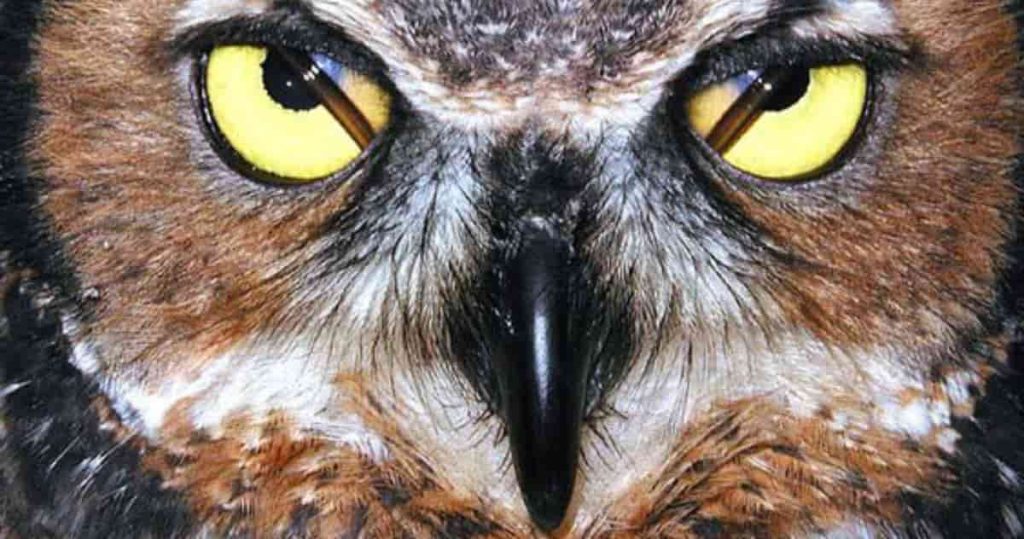
We have many questions in our minds about owls, a nocturnal bird, one of which is “Do owls blink?” Owl, as a nocturnal predator, has his eyes adapted for better night vision.
In particular, their two senses, sight and smell, are more active at night than in other animals.
Through this article, I will reveal the secrets of the owl’s eyes, such as Can owls blink their eyes, Special About an Owl’s Eyes, When Owls Blink, Can the owl live without blinking, etc. Which will make you more experienced with owl eyes.
Let’s start then do owls blink their eyes?
Contents
- 1 Do owls blink their eyes?
- 2 Why do owls blink one eye at a time?
- 3 What is Special About an Owl’s Eyes?
- 4 Large forward eyes:
- 5 Fixed Eye Sockets:
- 6 Nocturnal Adaptation:
- 7 Wide Pupils:
- 8 Look at the unblinking:
- 9 Nictitating Membrane:
- 10 Color vision:
- 11 How do owls blink?
- 12 What Does It Mean When Owls Blink?
- 13 How often do owls blink?
- 14 How long can owls go without blinking?
- 15 Do owls blink while they are sleeping?
- 16 What birds blink except owls blink?
- 17 Compare the blinking of owls with the blinking of other birds
- 18 Owl Blinking vs Human Blinking
- 19 Why do owls not blink?
- 20 FAQs
- 21 Conclusion
Do owls blink their eyes?
Yes, owls blink like many other birds, but their blinking pattern is quite different from that of humans. Owls have a special type of membrane in their eyes called the nictitating membrane or “third eyelid”.
This membrane is the protector of the owl’s eyes. As such this transparent membrane helps to protect their eyes, maintain moisture, and ensure sharp vision.
Although their blinking is rarely noticeable as this blinking occurs so rapidly, it is an essential adaptation that contributes to their unique characteristics and ability to hunt at night.
Why do owls blink one eye at a time?
Owls are distinguished by their unique eye structure from other birds. They blink one eye at a time due to the presence of a nictitating membrane.
The nictitating membrane, a thin, transparent layer, lining owls’ eyes, helps them see better in the dark.
By blinking one eye, they help regulate their body temperature, maintain balance, protect the eyes from dust, and maintain eye moisture which gives them sharper vision.
An owl needs to hunt for its survival and without a sharp eye it’s not possible to hunt.
So the eyes of owls are adapted in such a way that they can hunt well in the dark by blinking one eye while hunting at night.
What is Special About an Owl’s Eyes?
Owls are gifted with keen eyesight adapted to their nocturnal lifestyle and hunting manner making their eyes different from those of other predators.
Large forward eyes:
One of the most distinctive features of owl eyes is the large eyes compared to the size of their heads.
These eyes with binocular vision serve accurately to judge the distance of prey, helping them hunt in low light.
Fixed Eye Sockets:
Unlike humans, owls cannot rotate or move their eyes within their sockets.
It is their advantage that they can rotate their heads up to 270 degrees while not moving their eyes, which allows them to focus on a large area without moving their bodies.
Nocturnal Adaptation:
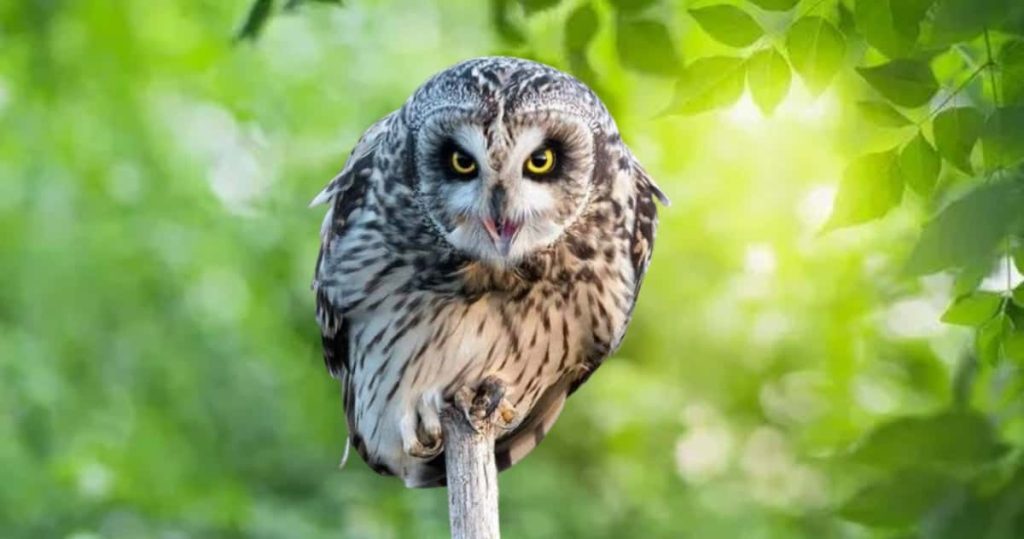
Owls have a large number of rod cells in their retinas, which are more sensitive to low light and sharpen their night vision.
The tapetum lucidum, a reflective layer behind the retina, is there to capture even the faintest traces of light.
Wide Pupils:
Owls have significantly wider pupils, allowing the pupils to dilate to allow more light to enter the eye. Which helps in finding prey at night.
Look at the unblinking:
Owls blink their eyes much less often than other birds and much faster which helps them to get a better view of the predator.
Nictitating Membrane:
The nictitating membrane, located in the owl’s eye or “third eyelid,” is a transparent layer that helps the owl’s eye retain moisture and clear dirt.
Color vision:
Some owl species have color vision. Although not adapted for night vision, this enables them to distinguish between colors to some extent.
How do owls blink?

Unlike many other animals, owls cannot move or rotate their eyes freely within their eye sockets, so their eyes are relatively large in comparison to their heads.
Owls can rotate their heads while keeping their bodies still.
They blink very little and very quickly compared to other animals, Owls have a nictitating membrane, a transparent membrane, instead of their eyelids to clean the eyes like a windshield wiper.
The nictitating membrane protects the owl’s eyes during high-speed flight or in strong winds and maintains eye moisture.
What Does It Mean When Owls Blink?
Owls blink for the same reason that all animals, including humans, blink. Blinking is an essential part of eye health
Owls blink for many reasons, such as blinking to lubricate the eyes by spreading the tears around and keeping the eye moist.
Owls blink to remove dirt from the eyes and protect the eyes from wear and tear. Eyes blink to protect eyes from strong wind and sun rays.
The owl blinks frequently when it senses its eye strain. Owls blink to protect the retina and to respond to sudden events, just as humans wear eyelids.
How often do owls blink?
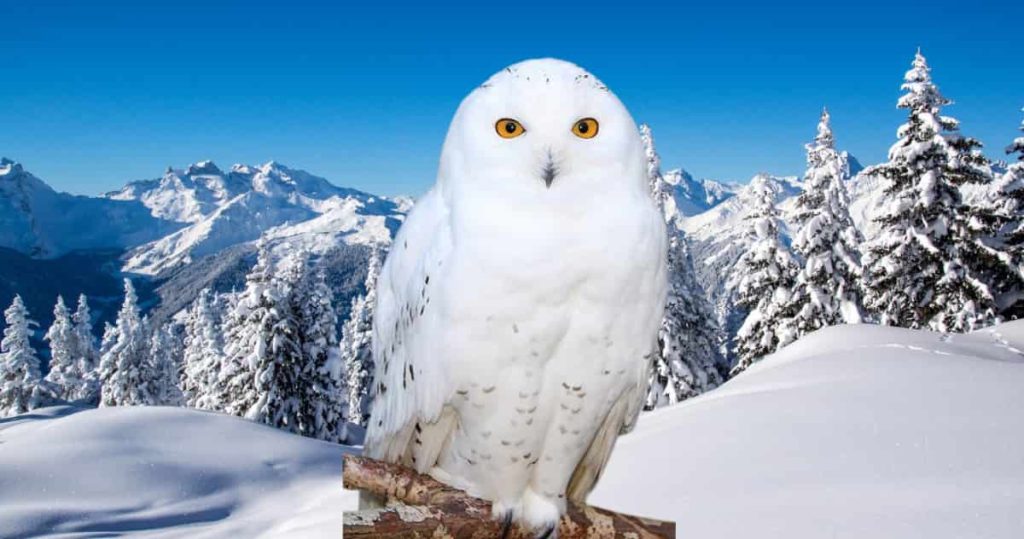
Studies have shown that people blink their eyelids 15 to 20 times a minute but an owl blinks less than that. A nocturnal bird has been found to blink much less than a diurnal bird.
As nocturnal birds, owls blink 2 to 4 times per minute.
However, the amount of this blinking depends on several factors, such as the discomfort of the owl’s eyes, strong sunlight, wind flow, rainfall, etc.
However, there are many species of owls in the world, so the number of blinks per minute can be slightly lower or higher in all species.
How long can owls go without blinking?
Blinking is a normal sign for owls to protect their eyes. But it is impossible to tell how long an owl can go without blinking.
because eye closure in an animal varies based on the animal’s behavior and environmental conditions.
Although owls are less flitting than other animals, their flitting depends on their behavior and environment.
Do owls blink while they are sleeping?
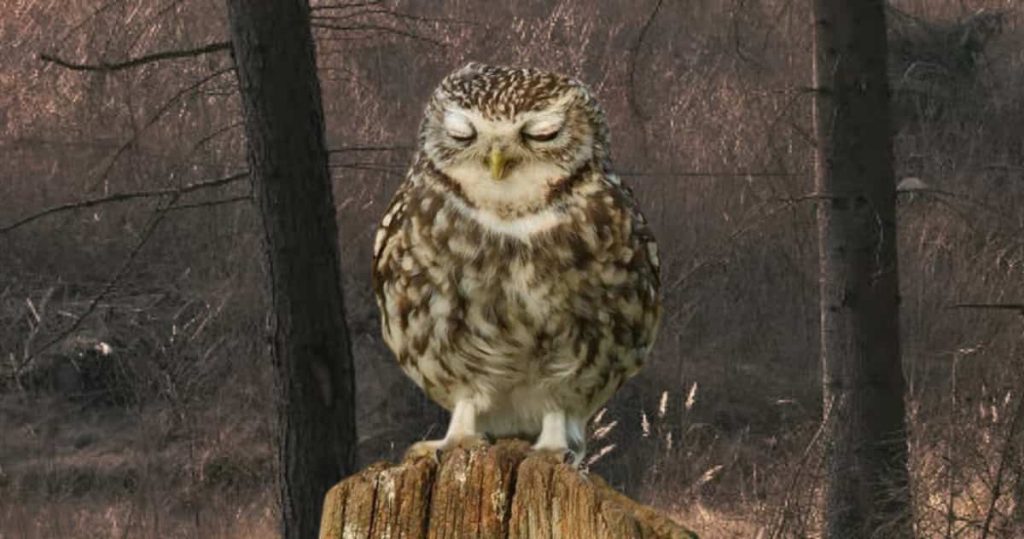
Owls do not sleep with their eyes completely closed like humans. Owls practice a unique sleep behavior known as “monocular sleep,” which enables them to close one eye while the other is open.
This ability is due to their fixed eye position within their eye sockets, as their eyes are large and cannot rotate like human eyes.
One eye is open and alert while the other rests, and they alternate between eyes during sleep.
This practice keeps them aware of their surroundings and potential threats, which is crucial to survival, especially at night when they are active hunters.
Yes, owls can blink while sleeping, but the frequency of blinking during sleep is generally lower than that of when they are awake and active.
What birds blink except owls blink?

Not all birds blink like owls, each bird has certain eye protection features. However, several birds mentioned below have a nictitating membrane or a transparent protective inner eyelid like the owl.
Birds of prey like owls and hawks have nictitating membranes and they also blink. Pigeons and doves also have nictitating membranes, they also blink.
Penguins and songbirds also have nictitating membranes. Ducks, geese, and other waterfowl also blink, as well as seabirds such as gulls and pelicans.
Compare the blinking of owls with the blinking of other birds
Not all birds, like owls, have nictitating membranes, and their eye patterns vary from species to species. More or less all birds blink.
In 1927 Blount conducted experiments on blinking in several mammals and several birds. While owls blink 5 to 6 times per minute, ostriches blink 55 times per minute and parrots 26 times per minute.
More and more research is currently being done on many birds, and new information is emerging about their eye structure and blinking.
Owl Blinking vs Human Blinking

Humans are mammals whereas owls are birds of prey. Both of them have different blinking patterns which we have discussed below:
| Owl Blinking | Human Blinking |
| Blinking frequency is usually slow, and hardly noticeable, 2 to 4 times per minute. | Adapted to frequent blinking, blinking about 15-20 times per minute. |
| Fine eyelids are nocturnal adaptations, adapted to see in low light. | Adapted to see well in daylight. |
| Owls have nictitating membranes in their eyes. | Humans do not have a nictitating membrane. |
| Less blinking helps focus on the prey. | There are frequent blinking eyelids and hairs on the leaves that protect them from dirt. |
Why do owls not blink?
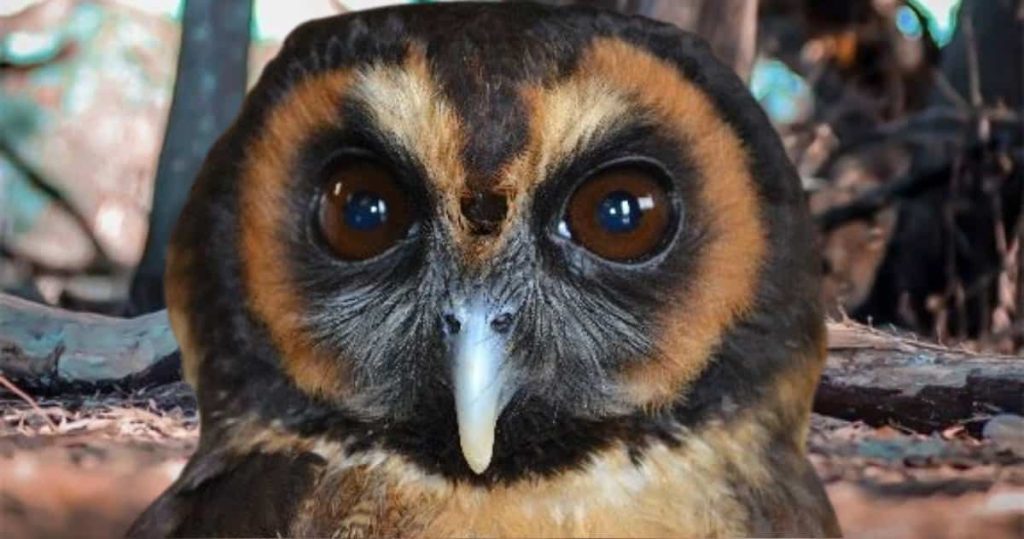
Owls blink much less than other animals and are so fast that they are impossible to see easily, so many people think owls don’t blink.
Many people show their eagerness to know why owls don’t blink, we answer that owls blink 2 to 4 times a minute.
The amount of this blinking can vary depending on the species of owl and the environment.
Owls do not blink when they feel their eyes are moist and are not feeling any discomfort.
FAQs
Q. Do great horned owls blink?
Ans: yes great horned owl’s eyes blink 2 to 4 times per minute.
Q. How many eyelids do owls have?
Ans: Owls have upper and lower eyelids like other birds. In addition, there is a transparent thin leaf called the nictitating membrane, that is, the owl has a total of three eyelids.
Q. How fast do owls blink?
Ans: Owls can flutter their eyelids for a few microseconds, they usually blink 2 to 4 times a minute.
Q. Do owls sleep with their eyes open?
Ans: Owls cannot close both eyes at once like humans. They sleep keeping one eye closed and one eye open at the time of sleeping.
Q. Do owls blink or close their eyes?
Ans: Owls blink several times a minute.
Conclusion
In response to the “Do owls blink” question discussed above, it is clear that owl’s eyes are well-developed for hunting at night.
Their less blinking than other animals helps them catch their prey by keeping a sharp eye on them.
It also enables us to see better in low light and fly faster. Comparatively larger eyes than the head help them to have binocular vision.
The Nictitating Membrane keeps their eyes moist and protects them from dirt and dust.